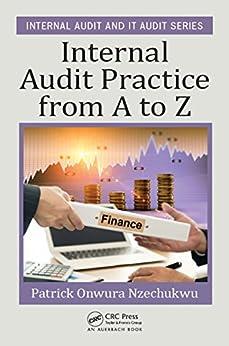Question
1. Which of the following are the net asset classes required by the FASB for not-for-profit organizations? A) Reserved and Unreserved. B) Invested in Capital
1. Which of the following are the net asset classes required by the FASB for not-for-profit organizations?
A) Reserved and Unreserved.
B) Invested in Capital Assets, Net of Related Debt, Restricted, and Unrestricted.
C) Without donor restrictions, with donor restrictions.
D) None of the above.
2. What are the financial statements and other information required for not-for-profit organizations?
A) Statement of Financial Position, Statement of Activities, Statement of Cash Flows, Expense by Nature and Function (may be disclosed in the noted to the financial statements).
B) Balance Sheet, Statement of Revenue Expenditures and Change in Fund Balance.
C) Statement of Revenues, Expenses and Changes in Net Position, Statement of Cash Flows.
D) Statement of Financial Position, Statement of Activities.
3. According to the FASB Codification, which of the following is a condition that must be met for contributed services to a not-for-profit organization (NFP) to be recorded as both a contribution and as an expense or asset?
A) The service creates or enhances nonfinancial assets.
B) The service requires a specialized skill, is provided by someone who possesses the specialized skill and if not donated would be purchased.
C) The service supplements the management, fund raising or program service function.
D) Either A or B.
4. Which of the following would be a contribution increasing net assets with donor restrictions?
A) A contribution by a donor in the amount of $1,000,000, set aside by the governing board as funds not to be expended.
B) A contribution by a donor in the amount of $1,000,000, set aside by the donor as funds not to be expended.
C) Both of the above.
D) Neither of the above.
5. A donor gave $60,000 to a not-for-profit charity with instructions that the funds be transferred to Sam Smith, an individual who lost his home in a fire. The not-for-profit would:
A) Record the $60,000 cash and credit with donor restrictions revenue.
B) Record the $60,000 cash and credit a liability.
C) Do either (a) or (b), depending upon the policy of the not-for-profit.
D) Not record the transaction.
6. A skilled carpenter replaced the roof for a private not-for-profit free of charge. The not-for-profit would have had to pay $5,000 for this replacement if not donated. What entry should the not-for-profit make?
A) Building 5,000
Contribution revenue 5,000
B) Building 5,000
Construction expense 5,000
C) Repairs 5,000
Contribution revenue 5,000
D) No entries are necessary for the transaction.
7. Care Foundation is a voluntary health and welfare organization funded by contributions from the general public. Care sold equipment for $30,000 which cost $40,000 and had a net book value of $25,000 at the time of sale. In recording the sale, Care should:
A) Record a gain of $ 5,000
B) Record proceeds from sale of land of $ 30,000
C) Both (a) and (b) above
D) Neither (a) nor (b) above
8. An unconditional pledge of support is properly recorded as revenue with donor restrictions at the time of the pledge. Changes in the present value of the receivable resulting from the passage of time is reported as:
A) Interest income
B) Contribution revenue
C) Program revenue
D) Expense reduction
9. Care Foundation is a voluntary health and welfare organization funded by contributions from the general public. In its Statement of Activities, depreciation expense should:
A) Not be included
B) Be included as an element of only support services
C) Be included as an element of revenue
D) Be included as an element of expense
10. Which of the following factors, if present, would indicate that a transaction is not a contribution?
A) The resource provider received value in exchange
B) The resource provider entered into the transaction voluntarily
C) The transfer of assets was unconditional
D) The organization has discretion in the use of the assets received
11. A not-for-profit organization received a gift of $460,000 with purpose restrictions in 2001. In 2002 funds were expended for the purpose outlined in the gift, however, it was not possible to determine whether the restricted funds or unrestricted funds were used. The presumption should be:
A) the restricted funds would have been used first.
B) the unrestricted funds would have been used first.
C) the restricted funds and unrestricted funds would have been used equally.
D) the restricted funds and unrestricted funds would have been used, based on a weighted average of the amounts.
12. Which of the following pledges of support would not be recognized in the year the pledge was made?
A) A pledge with no restrictions, but conditional on receiving matching pledges.
B) An unconditional pledge restricted to a particular purpose.
C) An unconditional pledge restricted to a particular year in the future.
D) None of the above all would be recognized.
Step by Step Solution
There are 3 Steps involved in it
Step: 1

Get Instant Access to Expert-Tailored Solutions
See step-by-step solutions with expert insights and AI powered tools for academic success
Step: 2

Step: 3

Ace Your Homework with AI
Get the answers you need in no time with our AI-driven, step-by-step assistance
Get Started


